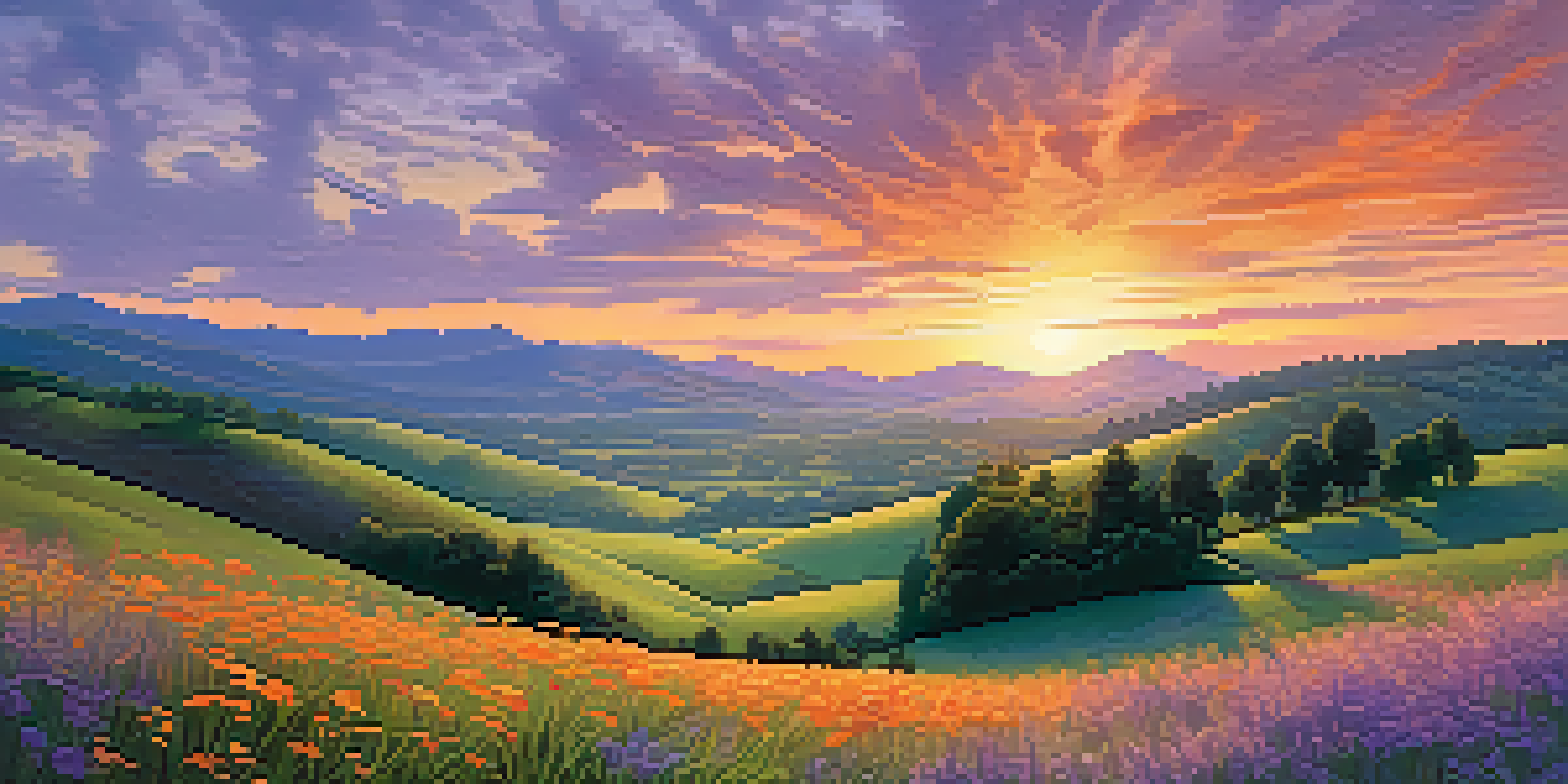Creating Depth: Layering Techniques in Painting Composition

Understanding Depth in Painting Composition
Depth in painting refers to the perception of three-dimensionality on a two-dimensional surface. It allows a viewer to feel as though they can step into the artwork, making it more engaging. Artists achieve this depth through various techniques, one of the most effective being layering, which involves applying multiple layers of paint to create a sense of distance and perspective.
The Role of Layering in Creating Depth
Layering is essential for building complexity within a painting. By applying paint in thin, transparent layers, artists can gradually develop colors and textures that mimic the natural world. This method not only deepens colors but also allows for subtle gradations that help to create the illusion of depth.
Layering Adds Depth to Paintings
Artists achieve a sense of depth by using layering techniques that build complexity and mimic natural colors.
Choosing the Right Materials for Layering
The choice of materials can significantly impact the effectiveness of layering techniques. Acrylics, oils, and watercolors all offer different properties; for instance, oil paints take longer to dry, allowing for more manipulation. Conversely, acrylics dry quickly, which can be advantageous for building layers rapidly, but may require more careful planning.
Establishing a Strong Base Layer
The foundation of any layered painting is the base layer, which sets the stage for everything that follows. This layer often consists of a solid color or a simple gradient that covers the canvas. A well-executed base layer can enhance the vibrancy of subsequent layers and guide the viewer's eye throughout the composition.
Materials Influence Layering Techniques
The choice of materials, such as acrylics or oils, significantly affects the layering process and the resulting depth.
Building Up with Mid-tones and Highlights
Once the base layer is established, the next step is to add mid-tones and highlights. These layers should be applied with precision to create dimension and focus areas within the painting. For example, in a landscape, mid-tones can be used to depict the foliage, while highlights can bring attention to areas such as sunlit flowers.
Incorporating Shadows for Realism
Shadows are crucial for creating a realistic depth in a composition. They add contrast and help define the shape and form of objects within the artwork. By layering darker tones strategically in shadowed areas, artists can enhance the three-dimensional effect, making objects appear to recede or advance within the space.
Final Touches Enhance Composition
Refining colors and adjusting highlights during the final touches is crucial for achieving a harmonious depth in the artwork.
Experimenting with Transparency and Opacity
Exploring transparency and opacity in your layers can lead to stunning effects. Transparent layers allow underlying colors to show through, creating a rich depth and complexity. Conversely, opaque layers can offer bold statements and define shapes clearly, making it essential to balance both techniques in your composition.
Final Touches: Refining and Balancing Depth
After layering, the final touches are vital to refining the overall depth of the painting. This can include adjusting colors, enhancing highlights, and even adding glazes to unify the composition. The goal is to create a harmonious balance that draws the viewer in and keeps their eye moving throughout the artwork.